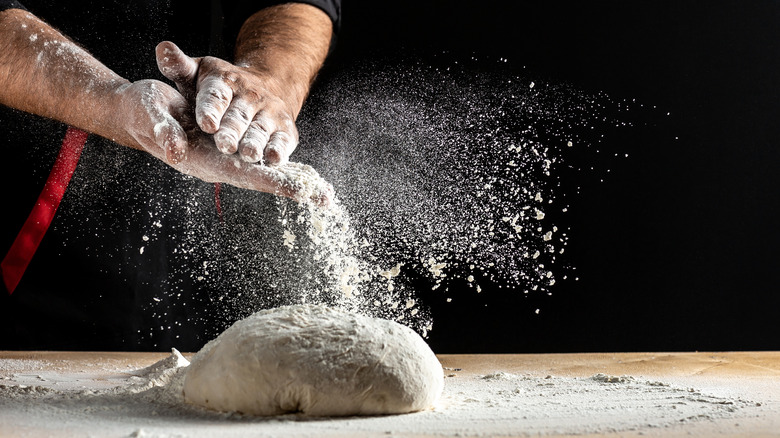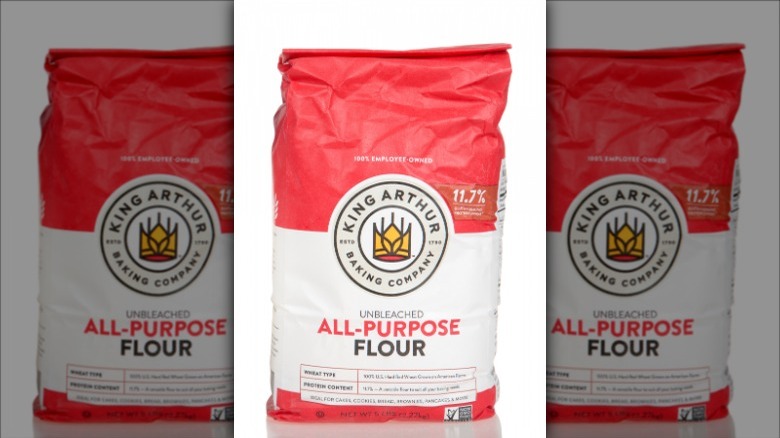Why It Pays To Stick To The Same Brand Of All-Purpose Flour
There are many different types of flour out there and even more brands, especially when it comes to all-purpose flour. It can get a little overwhelming figuring out if white whole wheat flour is actually whole wheat and actually white. According to Serious Eats, wheat can vary based on its color, the season in which it's grown, and the texture, and that is before you turn all that different wheat into dozens of different types of foods like cake or double zero pizza. While our forte is food and not math, we can venture a guess and say that gives you hundreds of different variations of flour to choose from. And though we appreciate the options, we're just trying to make scones here.
All-purpose flour should be the simple, multi-use ingredient you can use in any situation and get decent results. However, King Arthur Baking notes that what actually makes flour all-purpose is that it's milled to have a protein content right in the middle of the flour pack. The more protein a flour has, the stronger its gluten bonds are, so high-protein flour is excellent for crusty, airy bread, and lower levels are suitable for tender cakes. All-purpose should hit a versatile middle ground, but unfortunately, even here, the nuances of flour and flour brands can get in the way.
Different brands of all-purpose flour can produce different recipe results
Baking has a reputation for being about precisely measuring ingredients, but it's also about consistency. That means keeping the same hydration level or the same shaping method, but it should also involve using the same brand of flour. As Stella Parks tells Lifehacker, different brands of all-purpose flour are not really interchangeable. Each company uses its own blend of flour that can vary in protein content, starch levels, and how chemically treated it is. You might have made a great batch of crumbly cookies using a Pillsbury brand flour, but the same recipe made using a King Arthur flour could turn out tougher with no difference in the process.
What accounts for the difference in all-purpose flour? A lot comes down to the type of wheat each company uses. According to America's Test Kitchen, most AP flour is made with hard red winter wheat, but some brands use a mix of hard and soft wheat. This means that the all-important protein content can vary pretty widely. While most come in at around 10% protein, they go as low as 7% and as high as nearly 13%, which is as big as the variation between Bob's Red Mill's cake and bread flours.
So while it always pays to experiment with different options, once you find a brand that works for your favorite recipes, stick with it, or you'll have to go back to the drawing board.

